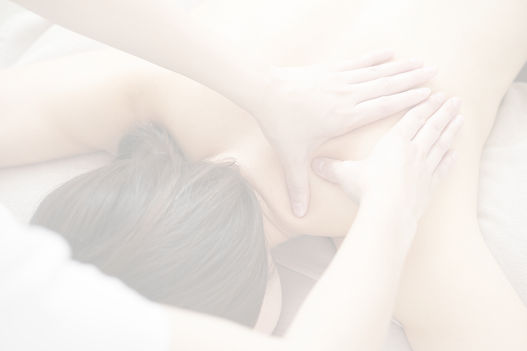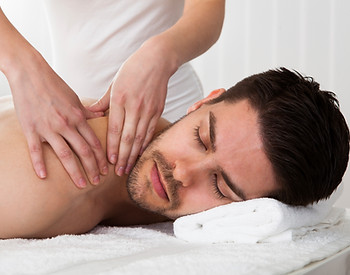
What Is Massage Therapy?
Massage therapy involves the skilled manual manipulation of muscles and soft tissues to relieve pain, reduce tension, and support functional recovery. In physiotherapy, it’s used not for relaxation alone, but to prepare the body for movement, desensitize pain, and promote healing.
How Does It Work? (Science, Not Fluff)
1. Pain Gate Control
Massage stimulates large A-beta sensory fibers, which inhibit pain signals from smaller A-delta and C fibers at the spinal cord level.
Result: Reduced pain perception — especially useful in acute injury or chronic sensitization.

2. Endogenous Pain Modulation
Massage boosts the release of endorphins, serotonin, and dopamine. These natural chemicals activate descending inhibitory pathways that dampen pain from the top down.
3. Muscle Relaxation & Reduced Guarding
Massage decreases muscle spindle sensitivity and enhances Golgi tendon organ activity.
Result: Reduced muscle tone, spasm, and perceived tightness — helping break the pain–spasm–pain cycle.

4. Improved Blood Flow & Lymphatic Return
Rhythmic compression and tissue mobilization increase circulation and assist fluid drainage.
Benefit: Delivers oxygen and nutrients, clears metabolic by-products, reduces swelling.

5. Friction-Generated Heat
Massage creates local heat via mechanical friction — especially with techniques like effleurage or deep tissue kneading.
Result:
-
Local vasodilation (more blood flow)
-
Enhanced tissue elasticity
-
Better tissue prep before stretching or loading
This effect is real, measurable, and clinically useful. No pseudoscience required.
6. Fascial & Scar Tissue Mobilization
Cross-fiber friction and myofascial techniques can loosen sticky fascial layers and remodel scar tissue, helping restore normal movement patterns.
7. Parasympathetic Nervous System Activation
Massage reduces sympathetic drive and activates the “rest and digest” state.
Result: Calmer nervous system, less stress, reduced pain perception — especially useful in chronic conditions.
When Is Massage Used in Physio?
-
Acute muscle strains or spasms
-
Post-op recovery (scar mobilization, tissue prep)
-
DOMS (Delayed-Onset Muscle Soreness)
-
Chronic pain (e.g. low back pain, fibromyalgia)
-
Before or after exercise rehab
-
To assist manual therapy or neuro-based treatments

What It Doesn’t Do
-
❌ Doesn’t remove “toxins”
-
❌ Doesn’t lengthen muscle long-term
-
❌ Isn’t a cure on its own — must be paired with movement-based rehab





.png)
.png)
.png)
.png)
.png)
.png)
.png)
.png)
.png)